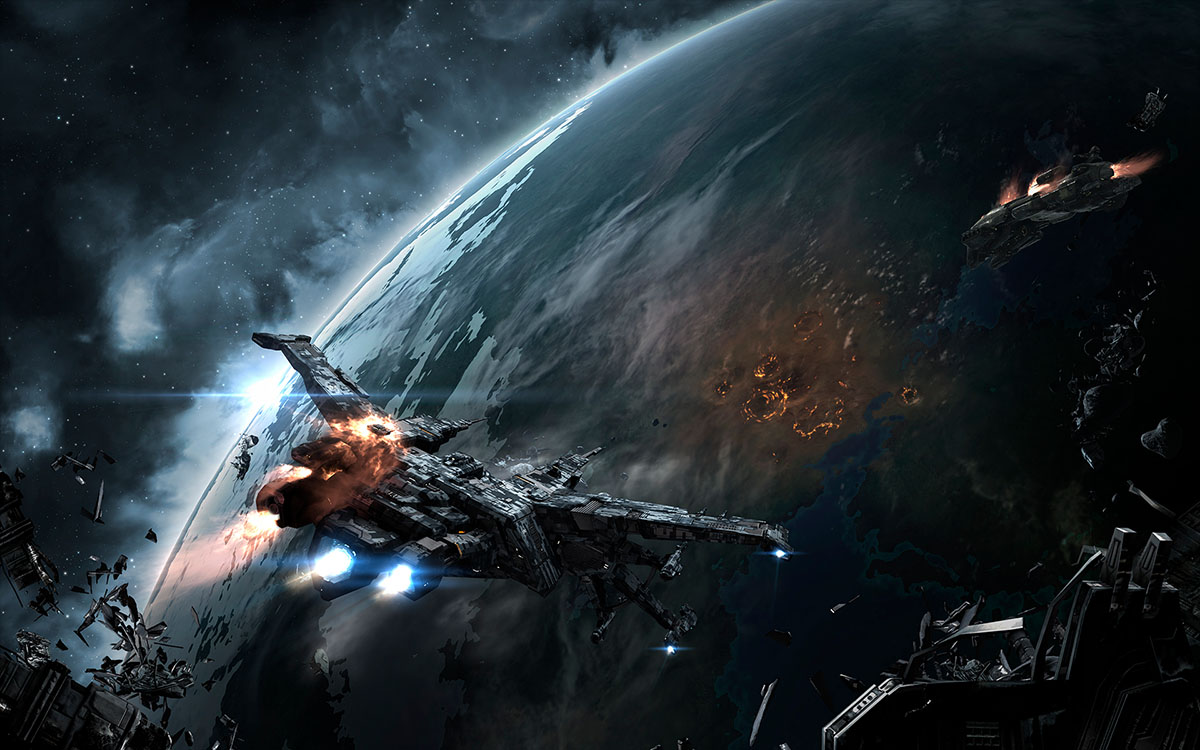why space fighters would actually be useful

Just about every sci-fi movie featuring a battle in the depths of space generally shows large ships engaged in pitched combat sending out a swarm of fighters to deliver surgical blows to their enemies. Big battle ships do make perfect sense. After all, if you’re out to invade other worlds or conducting military patrols in deep space, you need to have enough room to house your crew and store enough supplies to keep said crew healthy and well fed. But when it comes time to actually engage an enemy, what about the fighters?
The physics of space flight mean that you can’t simply send something like a plane to dogfight its way to bomb your targets, they will be going far too fast for that. The best they could do is repeated hit and run raids, whizzing past enemy craft to then reverse course back towards their mothership, hoping to pass by the enemy one more time on return. So there have been murmurings by those who want more science in their science fiction that if we ever have any real wars in space, we can forget about the fighters. Instead, we’ll just use small, powerful kinetic missiles.
But before we start redesigning our plans for fleets of battleships meant to project power on an interplanetary scale and nixing research into space-based fighters and bombers, we should consider that the same issues have been encountered on Earth. For decades now, the U.S. had extremely accurate long range missiles that can be launched by a submarine or an aircraft carrier in the rough geographical vicinity of a target. If it weren’t for the treaties and a real risk of nuclear war should someone overreact, ICBMs could be armed with more or less conventional warheads and sent to deliver precise strikes to enemy installations more than half a world away.
Why do we even need planes anymore if a missile can get there faster and do about as much damage without any risk to real live pilots, not to mention saving us the cost of building and maintaining new jets and bombers? Well, according to air forces around the world, it’s actually more expensive and logistically difficult to simply fire a whole lot of missiles into enemy territory than to send in bombers with a fighter escort during a full blown military campaign, and the reasons why could apply quite well to combat in space.
You see, guided missiles don’t just obliterate their targets and then come back, and the missiles in question here cost millions and millions of dollars to build and maintain. And what if you need to recall a missile in the middle of a mission? You’ll have to blow it up or divert it, losing it in the process. Planes can simply be called back, or rerouted to multiple targets to deliver multiple bombs in a single sortie. Here, missiles are useful for taking out air defenses and radar installations, soften up extremely hard targets, and lay the general paths for bombing raids.
After this initial volley, bombers and fighters can rush in to further dismantle enemy targets by dropping ordinance like bunker busters, extremely useful against a hardened installation, but far too heavy to load onto a missile and lob at an opponent. Likewise, in space, small but heavily armed craft which can whizz by enemy battlecruisers, delivering bomb after bomb after bomb after a volley of lasers and KKVs impairs the target’s ability to defend itself from the incoming swarm, can do a lot more damage at a smaller cost than just missiles all by themselves. And when you’re fighting an enemy millions if not billions of miles from home, you really need to try and get the most bang for your buck since a trip to your planet to reload is no trivial task.
So really, far from being a waste of resources, fighters for battleships would actually be a cost-effective way to deliver lots of damage to enemy craft very quickly, and given their small size and high velocity, they wouldn’t be easy to shoot down as they fly back and forth, emptying their weapons bays as soon as their targets are close enough to ensure a direct hit. And nothing says that they would have to be flown by humans, so there wouldn’t have to be any risk associated with being a space fighter pilot. It would be more like flying a drone, if there will even be a need for human drone operators that far in the future.
As odd as it sounds because the situation is usually reversed, it’s the movies that have it right about space fighters rather than the scientific skeptics here, at least as far as the rationale for having them is involved. The actual mechanics of their use on the battlefield as they’re portrayed on the silver screen however, well… let’s just say that entire chapters of books have been devoted to explaining just how wrong directors have them, but that’s a different topic.





